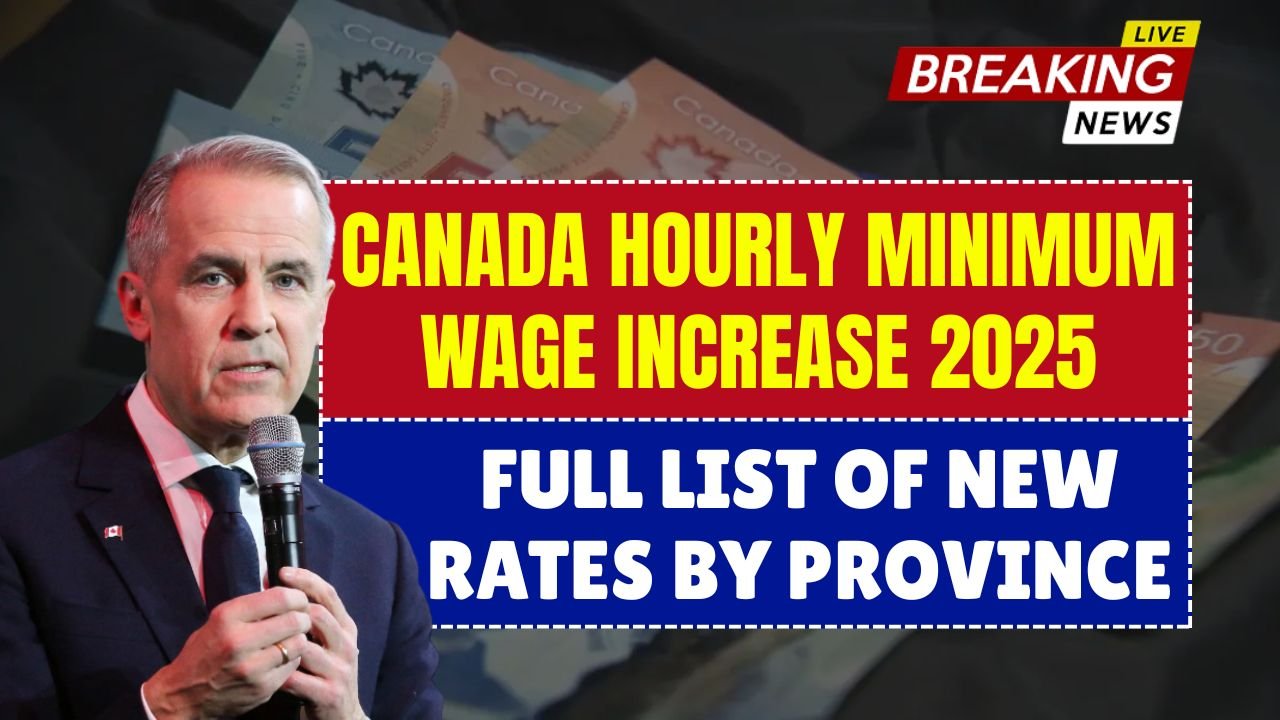Rising inflation, and the cost of living in Canada, have triggered a wave of provinces continually revising their minimum wage laws. Five major provinces—Ontario, Manitoba, Nova Scotia, Prince Edward Island, and Saskatchewan—are on this road to higher wages with an announcement that their minimum pay rates will be increased on October 1, 2025. This not only lightens the burden for workers but is also a major change for employers, HR teams, and lawyers as they will have to overhaul their compensation models and monitor compliance anew.
Ontario: New Minimum Wage with CPI-Based Wage Increase
Ontario has set the new minimum wage at $17.60 per hour, which is a $0.40 increase for 2025. This rise is mainly attributed to a projected rise of around 2.4% in the province’s Consumer Price Index (CPI). The new remuneration will be applicable to virtually all categories of workers, irrespective of the payment method—hourly, salary, commission, or otherwise.
Special categories have also been revised.
- The new wage for students under 18 has increased from $16.20 to $16.60 per hour, provided they work 28 hours or less per week.
- Wages for Hunting, Fishing, and Wilderness Guides have increased from $86.00 to $88.05 per day (for less than 5 hours of work). For those working more than 5 hours, the rate has increased from $172.05 to $176.15 per day.
Wages for Homeworkers have also increased by $18.90 to $19.35 per hour.
This change reflects the province’s desire to provide equal inflation benefits to different categories of workers.
Manitoba: Relief for Low-Income Workers
Manitoba’s minimum wage has been raised from $15.80 to $16.00 per hour. The increase is determined by the province’s inflation rate for the year 2024 which is 1.1% and is rounded to the nearest 5 cents. The adjustment, though not very big, is still of importance and it will be of great help to the low-paid workers who get their wages on a daily basis and are living at the bottom of the income scale.
[also_read id=”2982″]
Nova Scotia: Second Wage Increase in 2025
Nova Scotia is ring the changes again on the minimum wage and this is the second time that the Province has done so in 2025. The new rate will go up from $15.70 to $16.50 per hour. Usually, the hike of salaries every year is done on April 1st and it is based on the CPI with 1% increase approximately, but additional increment has been made this time in October. The main reason behind this is to counteract the sudden dramatic rise in the cost of living.
Prince Edward Island (PEI): Simple and Clear Wage Structure
The minimum wage in Prince Edward Island has been increased from $16.00 to $16.50 per hour. This increase was determined following an annual review by the province’s Employment Standards Board. This new wage will be applied equally to all employees, making the province’s wage structure even simpler and more transparent.
Saskatchewan: Wages determined by indexation formula
The minimum wage in Saskatchewan has been lifted from $15.00 to $15.35. The main characteristic of this uplift is that it is calculated through a cumulative indexation formula, which gives equal consideration to both the province’s Consumer Price Index (CPI) and average hourly wages. This method guarantees that the workers’ compensation goes up together with inflation as well as the whole income increase.
What’s going to change for employers?
With the new wage rates, which will be implemented in October 2025, employers will be required to make several administrative and compliance changes. These primarily include:
- Modifications to the payroll system
- Updating offer letters to reflect the new pay rates
- Revising workplace notices and schedules
- Correctly incorporating rates for special categories of employees—such as students, homeworkers, hunting guides, and guides
- New calculations for overtime, holiday pay, and allowances
If these changes are not made on time, employers may face legal penalties and back pay.
What should employees expect?
The new minimum wage means higher hourly earnings, which will directly increase employees’ monthly earnings. If you fall into a special category—such as students, guides, or homeworkers—confirm your updated salary with the payroll or HR team.
It’s crucial to check your payslips to ensure the new pay rate is correctly applied. If you find any errors, contact the HR department immediately.
[also_read id=”2996″]
Compliance and Future Preparation
Local governments enforce different regulations for certain roles in many industries. Therefore, it’s essential for employers to periodically review the latest regulations and guidelines in their area. This proactiveness not only prevents payroll errors but also strengthens employee trust.
FAQs
Q1. When will the new minimum wage rates take effect?
The updated minimum wage rates will be effective from October 1, 2025 across the five provinces.
Q2. Which provinces are increasing their minimum wage in 2025?
Ontario, Manitoba, Nova Scotia, Prince Edward Island, and Saskatchewan are implementing wage increases.
Q3. Do the new wage rates apply to all types of employees?
Yes. The changes apply to full-time, part-time, casual employees, and certain special categories like students and homeworkers.
Q4. What should employees check after the wage increase?
Employees should review their new hourly rate and pay slip to ensure the updated wage has been correctly applied.
Q5. What actions must employers take before October 1, 2025?
Employers must update payroll systems, revise offer letters, adjust workplace notices, and ensure correct rates for all employee categories.



